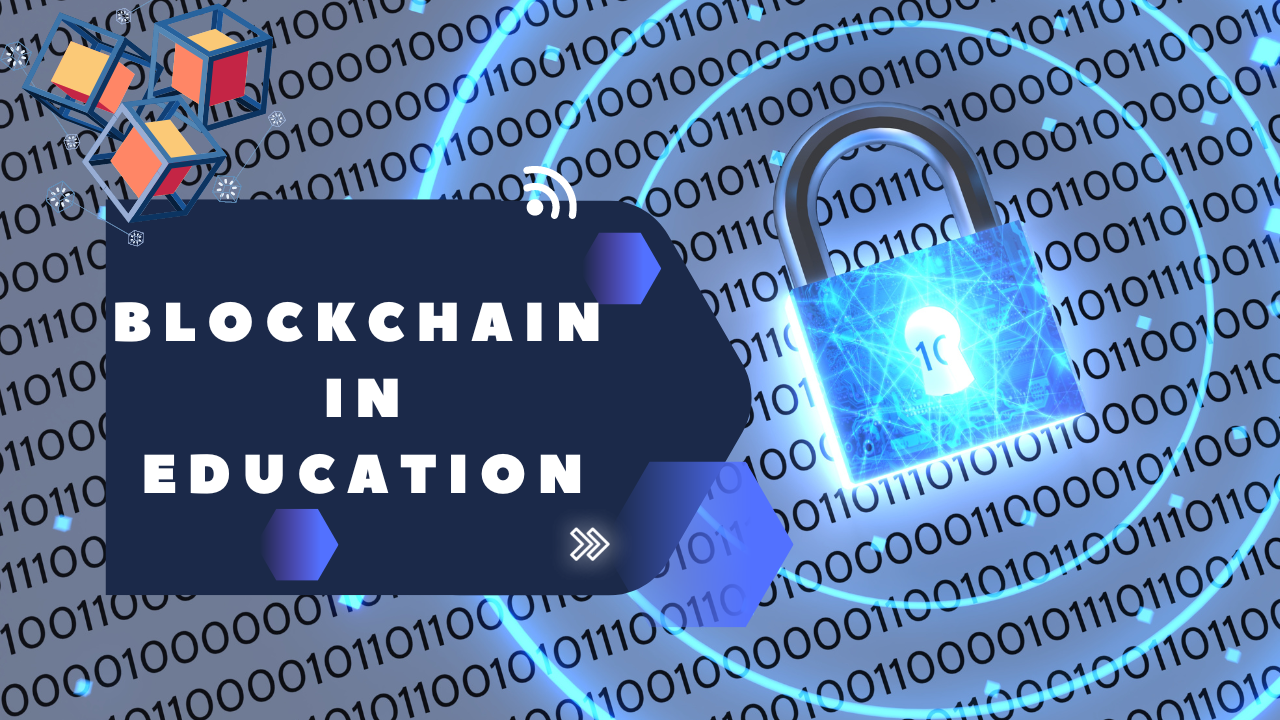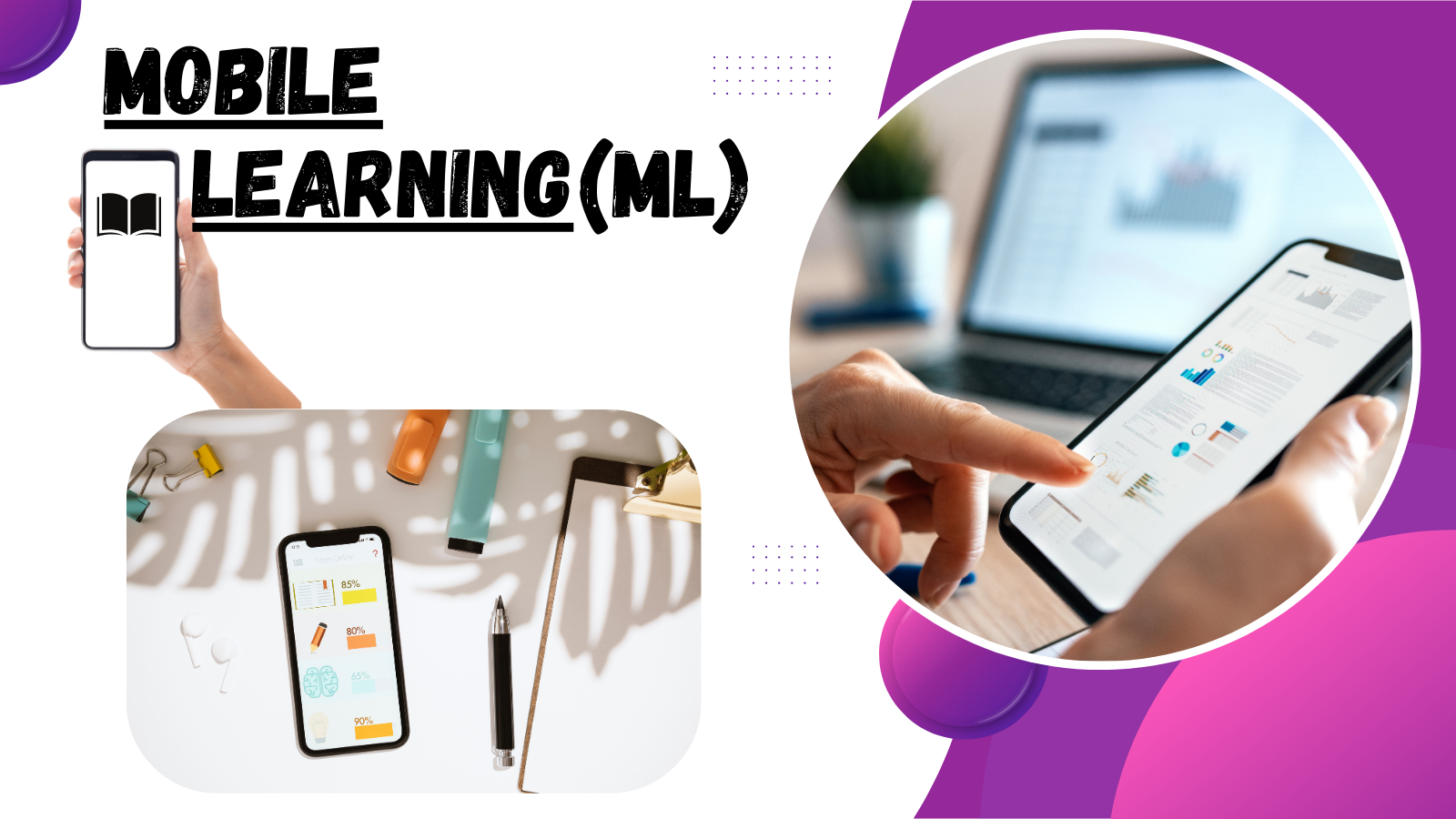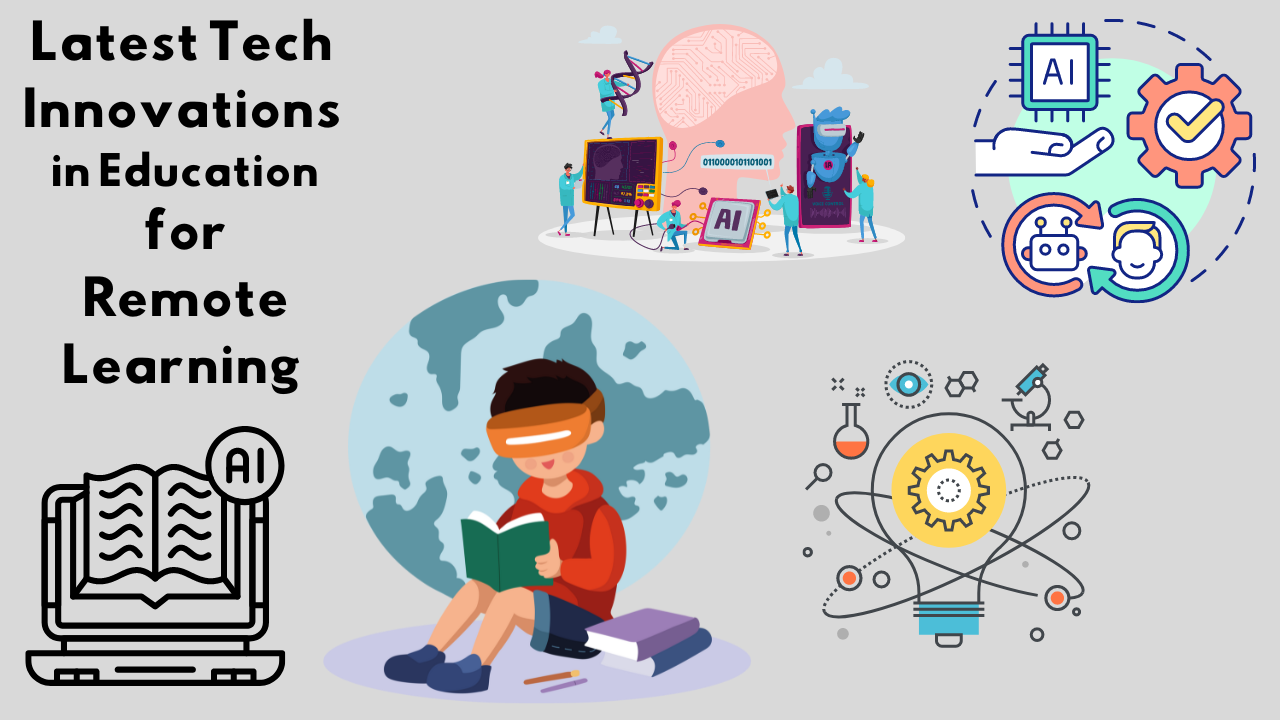The rapid transformation to online learning during the pandemic revolutionized the educational sector. Although it brought major issues but also opened opportunities for new tech solutions. When technology grew to make remote education the standard for educators and students all over the world, technology leaped to improve learning as well as accessibility, engagement, and. From AI-powered instruments to immersive digital environments new technology is revolutionizing the way that education is provided. In this article, we’ll look at several of the fascinating and efficient tech innovations in education specifically designed for distance learning.
Learning Management Systems (LMS)
Introduction:
Learning Management Systems (LMS) are the core of remote education. They provide an integrated platform for the delivery of monitoring, and tracking, in addition to managing the educational material. Platforms such as Moodle, Canvas, and Google Classroom are some of the most popular.
Innovative Features:
- Interactive lessons: Teachers can create interactive and multimedia-rich lessons that include embedded videos, quizzes, and discussions.
- Student tracking and feedback LMS platforms allow educators to monitor the progress of their students at a real-time pace, focus on providing feedback, and evaluate assignments online.
- Collaboration Tool: These systems include built-in tools such as discussion boards, workspaces for groups, and documents shared to facilitate collaboration, even from a distance.
Impact:
LMS platforms make it simpler for teachers to manage the course material and also for students to access their learning materials from any location at any time.
Artificial Intelligence (AI) in Education
Overview:
Artificial Intelligence is transforming into an education revolution through the provision of individualized learning experiences. AI-powered platforms such as Century Tech and Squirrel AI make use of adaptive learning algorithms to tailor lessons to each student’s needs.
Innovative Solutions:
- Customized Learning Pathways: Artificial Intelligence analyzes the students’ learning patterns and alters them to adjust the material and level of difficulty in line with them making sure that every pupil receives an individualized learning experience.
- AI-powered tutors: Virtual AI tutors are available 24 hours a day to benefit students with questions or assignments, which reduces the requirement for teacher supervision.
- Grading Automation Artificial Intelligence automates the grading process for exams, assignments, and even essays, allowing teachers to concentrate on more meaningful interactions with students.
Impact:
AI has made learning via remote more effective by providing individualized assistance and learning paths that adapt to the student’s abilities and strengths.
Virtual Reality (VR) and Augmented Reality (AR)
Overview:
Virtual Reality (VR) and Augmented Reality (AR) are revolutionizing how students engage in the classroom with material. These technologies that are immersive impart experiences that were previously only available as physical experiences.
Innovative Solutions:
- Virtual Field Trips VR lets students go on online field excursions to historic sites, laboratories for science as well as outer space all at the ease of their own homes.
- Interactive Simulations The AR application overlays information from the digital world on the real world and allows learners to play with 3-D images of the planets as well as human anatomy or architectural designs.
- Virtual classroom platforms like ENGAGE or Altspace VR provide fully immersive virtual classrooms where teachers and students can interact in 3D environments.
Impact:
VR and AR help make learning remotely fun and interactive, offering interactive experiences that increase retention and comprehension.
Gamification in Education
Overview:
Gamification incorporates game-like elements into learning environments, transforming lessons into fun and interactive experiences. Platforms such as Kahoot! and Classcraft are at the forefront of making learning more enjoyable through the use of games.
Innovative Solutions:
- Quizzes and Challenges Gamified platforms enable teachers to design questions, challenges, and contests that inspire students to play and learn.
- Rewards and Badges Students can earn badges, points, or other rewards when they complete their assignments or master new ideas, giving them a sense.
- Progression Tracking Platforms for gamification allow learners to see their progress as they learn and make it easier for them to monitor their progress and keep them engaged.
Impact:
Gamification boosts students’ engagement, especially in an online learning environment as it makes learning enjoyable and rewarding.
Cloud-Based Collaboration Tools
Overview:
Cloud-based tools for collaboration such as Google Workspace, Microsoft Teams, and Zoom have become indispensable for remote education. These tools allow unimpeded communication and cooperation between teachers and students, regardless of where they are.
Innovative Features:
- Real-time collaboration The students can collaborate in a team on shared documents such as spreadsheets, presentations, and presentations in real-time. This encourages cooperation and collaboration even when they are physically separated.
- Virtual classrooms Tools for video conferencing that integrate document sharing make it simple to organize virtual classes, discussions, or group work.
- Shared Files and Organized: Teachers and students can easily share and organize their resources such as assignments, notes, and homework with cloud storage. This will ensure that everything is available online.
Impact:
Cloud-based software has bridged the gap between teachers and students which allows for ongoing communication and collaboration that is vital for remote learning environments.
Educational Apps for Remote Learning
Overview:
Educational apps have exploded in popularity, providing easy education resources for a range of topics for students of all age groups. These apps allow for the opportunity of self-paced learning, which makes it easy for students to learn from material whenever they want to.
Innovative Solutions:
- Language learning apps: Duolingo, as well as Babbel, provide fun language lessons using gaming elements that make learning new languages easier for those who study at home.
- STEM-focused apps: Apps like Brilliant and Khan Academy focus on subjects such as math, science, and coding. They offer engaging lessons and problem-solving tasks.
- Interactive Reading Apps: Epic! Reading Eggs provides a vast collection of books and games that encourage children to improve their reading abilities.
Impact:
Educational apps can make education more flexible, and enjoyable by providing engaging material for students to use independently, at any time and from anywhere.
Blockchain in Education
Overview:
Blockchain technology is gaining ground in education, enhancing the verification of credentials and protecting the student’s information. This technology is particularly useful for remote learning, in which certificates and credentials need to be easily verified.
Innovative Solutions:
- Secure Accreditation: Blockchain allows institutions to issue digital certificates and diplomas that are secure and easily verified by the employer or other institutions.
- Students Record Management Blockchain guarantees that student records, such as grades and accomplishments are safe and only accessible to those who have been authorized.
Impact:
Blockchain is a safe and transparent method of managing educational credentials that imparts a brand new level of security and verification for online learning settings.
AI-Powered Assessment Tools
Overview:
Assessment and evaluation are essential elements of education. AI-powered tools make educators more able to grade students who are in remote locations. Tools such as Gradescope and Turnitin make use of AI to speed up the grading process and bring feedback.
Innovative Features:
- Automatic Grading AI will automatically score several-choice essay questions, essays, and assignments, thus making it easier for teachers and providing the same payoff.
- Plagiarism detection: AI tools detect plagiarism and originality of student work and ensure the integrity of academic work in remote settings.
- The Data-Driven feedback Artificial Intelligence tools focus on providing precise feedback on the performance of students that highlights areas for growth and improvement.
Impact:
AI-powered assessment tools increase the efficacy of grading as well as feedback, allowing teachers to concentrate more on personal instruction and less time on administration duties.
Video-Based Learning Platforms
Overview:
Learning platforms that use video, such as YouTube, Coursera, and EdX have become essential sources for students who live in remote areas. The platforms bring access to quality video material covering a variety of topics.
Innovative Solutions:
- Recorded lectures The teacher can take notes and then upload them to the web YouTube so that students can view them at their speed which makes learning more adaptable.
- Interactive Learning Websites such as Coursera provide interactive video lessons, tests, quizzes, and discussion forums that help students learn more effectively.
- Microlearning Platforms for video offer brief, specific lessons that concentrate on particular subjects, allowing students to learn more energetically in short periods.
Impact:
Learning platforms that use video serve as an adaptable and exciting method for students to collect access to educational content that makes learning remotely more engaging and accessible.
Mobile Learning (mLearning)
Overview:
Mobile learning, also known as mLearning, is the usage of tablets and smartphones to access educational material. Due to the wide accessibility of portable devices, learning on the go is now an ideal opportunity for students who are not in the classroom.
Innovative Solutions:
- Mobile-friendly matter: Educational platforms such as Khan Academy and Quizlet are optimized for mobile and allow students to access their lessons or quizzes as well as study tools on their mobile.
- Offline access: Numerous mobile-based learning applications provide offline access to the lessons and content that allow students to take classes even if they don’t have access to the internet.
- Push Notifications Apps for mobile use push notifications to alert students about upcoming deadlines, lessons, and assignments, which helps them stay on track.
Impact:
Mobile learning improves educational accessibility by allowing students to study at their own pace and provides the flexibility needed for learners who are remote and have different timetables.
Conclusion
The most recent technological advances in education have changed the way we view remote learning. From AI-driven, personalized learning tools as well as immersive VR experience technological advancements are making learning accessible, fun, and efficient for students across the globe. As these advancements continue to develop the future of remote learning has enormous potential for further advances that will continue to transform the landscape of education.
FAQs
What are the most efficient tech tools for remote learning?
The most efficient technology tools to benefit remote learners are AI-powered platforms cloud-based collaboration tools virtual reality experiences and games-based learning applications.
How can AI applied in the classroom?
AI in the field of education is utilized to tailor learning experiences, automate grade-giving, and give immediate information to students. It allows teachers to tailor lessons to the individual needs of learners and levels of progress.
What is gamification and its role in education?
Gamification in the classroom involves using elements that are similar to games like rewards, points, and challenges to make education more enjoyable and enjoyable for students.
Are there ways to make VR as well as AR increase the remote learning experience?
Yes VR and AR can increase learning remotely by providing immersive, hands-on experiences like virtual field trips, as well as interactive simulations, which increase the student’s engagement.
What are the ways that video-based learning platforms benefit students?
Learning platforms that use video allow students to study at their speed by providing recorded lectures, interactive classes, and brief specific video tutorials on diverse subjects.
